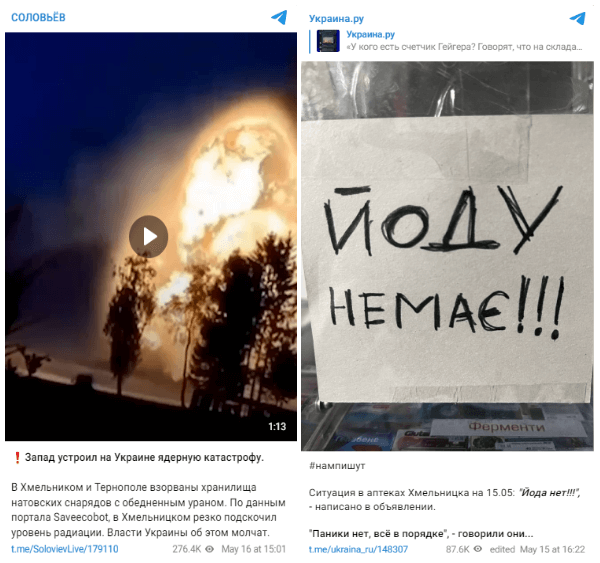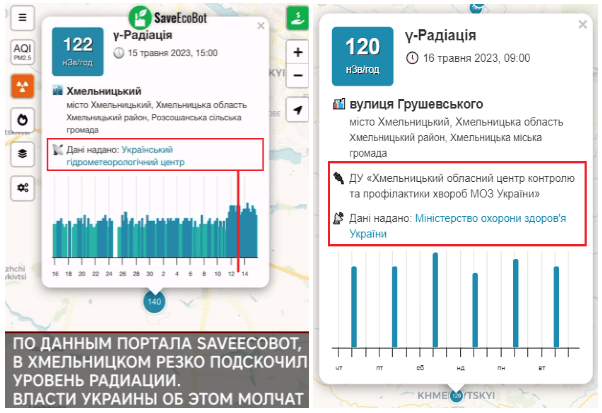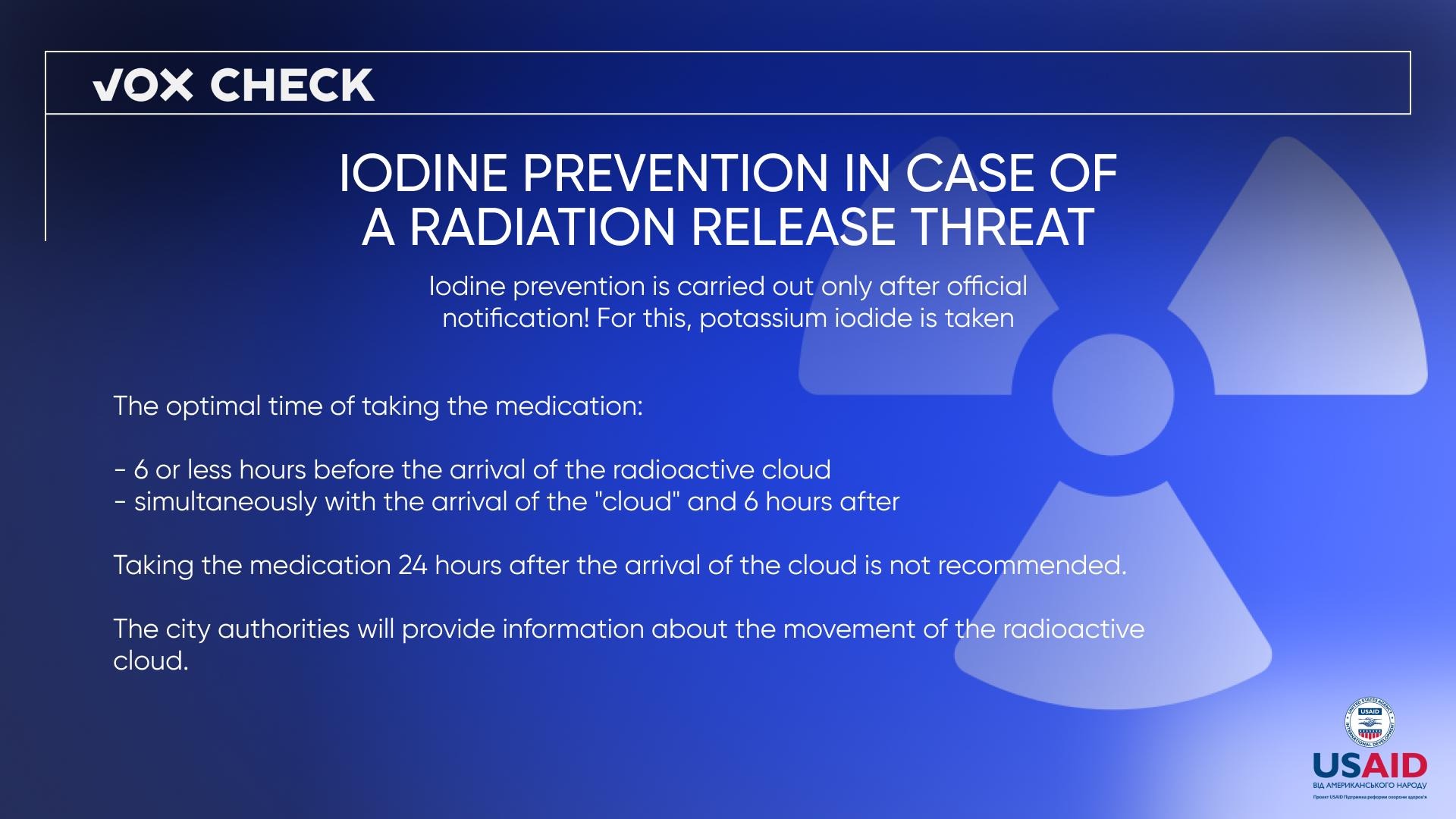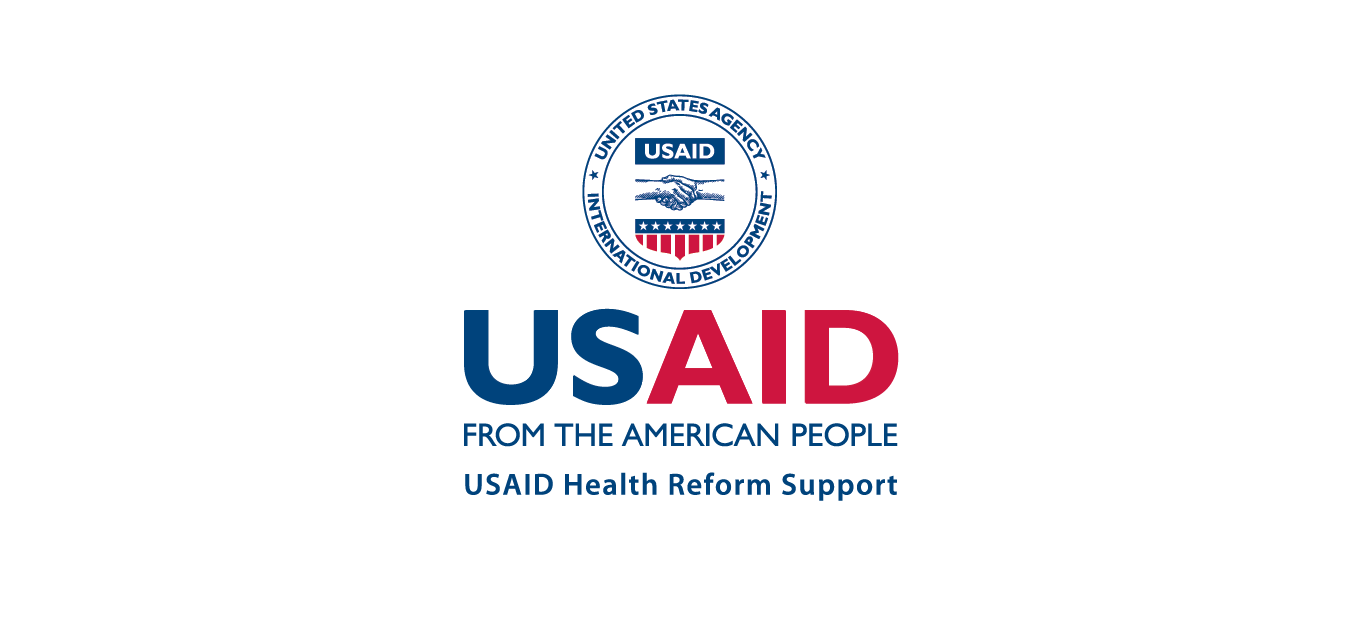In this issue, we debunk the propaganda claims about a “nuclear catastrophe” in the west of Ukraine. Supposedly, during recent explosions in Ternopil and Khmelnytskyi, warehouses containing depleted uranium ammunition were affected. Due to the release of uranium, residents were supposedly at risk, so they rushed to buy iodine for protection against radiation. Some “experts” seemed to think that uranium in the ammunition could not have caused such a massive effect, suggesting that it was not depleted uranium that exploded but substances used to make a “dirty bomb.”
With the support of the USAID Health Reform Support project, VoxCheck analyzes and refutes public health narratives spread in the information space of Ukraine, Belarus, and russia on a weekly basis.
There is information circulating in the network claiming that on May 13-14, warehouses with depleted uranium ammunition exploded in Ternopil and Khmelnytskyi. According to Russian propagandists, this caused panic among the local population, and people began to evacuate to other cities. Pharmacies in Khmelnytskyi ran out of iodine due to the rush. The fact that ammunition with depleted uranium exploded supposedly confirms an increase in radiation levels during this period. Russian experts suggest that it could also be an explosion of materials for a “dirty bomb” since both beta and gamma radiation were detected after the explosion.
What’s the reality?
Representatives of local authorities have refuted the information about explosions of depleted uranium ammunition. During a briefing on May 15, Volodymyr Trush, the head of the Ternopil Regional State Administration, stated that no ammunition, depleted or otherwise, had exploded and emphasized that there were no environmental issues in the city.
The spread of rumors about radiation hazards was also debunked by the Khmelnytskyi City Council. Local authorities emphasized that there were no deviations from normal radiation levels or other life-threatening substances in the region.
According to the Ternopil Regional Disease Control and Prevention Center of the Ministry of Health of Ukraine, the radiation level in the Ternopil region on the morning of May 14 was within normal limits. The permissible value of the radiation level according to the Radiation Safety Standards of Ukraine is 30 micro-roentgens per hour (30 μR/h), while in Ternopil, it was recorded at 11 μR/h. On May 15, the radiation level in the city was within 13 μR/h.
Roentgen (R) is the the unit of measurement for gamma radiation in the air. The radiation level is measured in roentgens per minute (R/min), roentgens per hour (R/h), or fractional units such as mR/min, mR/h, μR/min, μR/h.
The last update regarding the radiation level was posted on May 11 on the website of the Khmelnytskyi Regional Center for Disease Control and Prevention under the Ministry of Health of Ukraine. The average gamma background level in the city of Khmelnytskyi is 11-13 μR/h. However, on the center’s official Facebook page, it was announced that after the shelling on May 13, 2023, experts conducted studies on the presence of harmful substances in the air, water, and soil. The analysis of water quality, soil, air, and radiation levels remained within permissible limits, indicating that there is no threat to the population’s life.
Centers systematically transmit information to the SaveEcoBot portal. According to the statistics provided by the portal, on the morning of May 13, the radiation level in Khmelnytskyi reached 14 μR/h. This value slightly exceeds the average for the city but still remains within normal limits. On May 14, the radiation level decreased to 11 μR/h, and on May 15, it increased to 13 μR/h. The absence of a sharp increase in radiation levels also refutes claims of alleged explosions of substances for the production of a “dirty bomb”. In Ternopil, the radiation level also does not exceed the norm.
Additionally, in the video, propagandists used a screenshot from the SaveEcoBot portal dated May 15, which shows a “sharp increase in radiation levels after the explosion”. However, according to data from the Ukrainian Hydrometeorological Center, the indicators began to rise before the explosion, and afterward, a decrease was observed. Moreover, even during periods of slight increase, the radiation level does not exceed the permissible norm. If we look at the dynamics of indicators from the Regional Center for Disease Control and Prevention, it also shows a decrease in radiation levels after the explosion.
Photo source on the left: Solovyov’s Telegram channel. Photo source on the right: SaveEcoBot portal
There is no shortage of iodine in pharmacies in Khmelnytskyi or Ternopil. According to information on the Tabletki.ua website, as of May 18, 2023, both iodine tincture and potassium iodide are available for sale in most pharmacies in these cities.
Potassium iodide is a medication used for the prevention of thyroid gland disorders, particularly in cases of radiation exposure to the thyroid gland due to the intake of radioactive iodine isotopes.
Source: Ministry of Health of Ukraine
According to the Ministry of Health of Ukraine, potassium iodide is taken in the event of a radiation release to reduce the risks of thyroid gland disorders. The temporary intake of potassium iodide blocks the thyroid gland’s function, preventing it from absorbing radioactive iodine isotopes in radiation releases. However, it is necessary to take the preventive dose of potassium iodide only after receiving official notification from local authorities through the media. It should be taken only once, as prolonged intake of such medications or improper dosing increases the risk of decreased thyroid gland function. The use of iodine tincture or Lugol’s solution instead of potassium iodide is ineffective and can be harmful to health.
This information piece was produced with the assistance of the United States Agency for International Development (USAID), provided on behalf of the people of the United States of America. This article’s content, which does not necessarily reflect the views of USAID, the United States Government, is the sole responsibility of Deloitte Consulting under contract #72012118C00001.
Attention
The author doesn`t work for, consult to, own shares in or receive funding from any company or organization that would benefit from this article, and have no relevant affiliations





